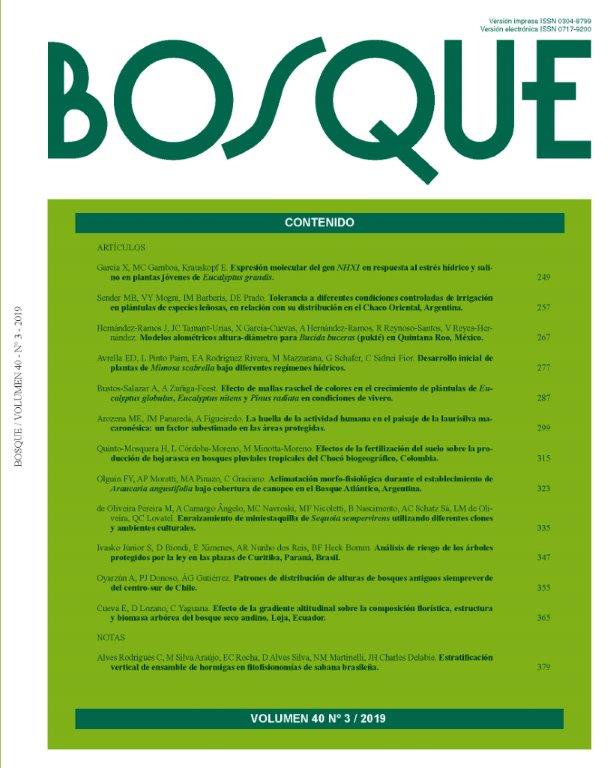Tolerance to different controlled irrigation conditions in woody species seedlings, in relation to their distribution in the eastern Chaco, Argentina
Main Article Content
Abstract
The eastern Formosa forests of Argentina, belonging to Eastern Chaco District, are distributed following a gradient from the watercourse levee where the ‘Bosque Ribereño’ is placed, through an intermediate zone where the so-called ‘Bosque Transicional’ develops, up to the topographically lower zone where the ‘Monte Fuerte’ forest is located. It has been postulated that the distribution of woody species amongst these three types of forests could be explained by their ability to survive to different stress conditions of water availability. In such context, it is proposed that, to the seedling status, that capacity could differ between species belonging to these forests, related to the topographic height of them. The tolerance to ‘restricted watering’ and ‘flooding’ controlled conditions in seedlings of eight selected woody species, (Peltophorum dubium, Enterolobium contortisiliquum, Gleditsia amorphoides, Microlobius foetidus, Diplokeleba floribunda, Caesalpinia paraguariensis, Prosopis nigra and Schinopsis balansae) belonging to the three forest types, was experimentally evaluated in this contribution. The results showed that the seedlings of all species were less tolerant to flooding prolonged conditions than to the ‘drought’ (restricted watering) level applied. None of them was affected in terms of growth under the ‘restricted watering’ treatment. In this way, the hypothesis could not be validated, nevertheless it is considered that such answer could be related to the fact these woody species usually thrive in the Seasonally Dry Tropical Forests domain.

